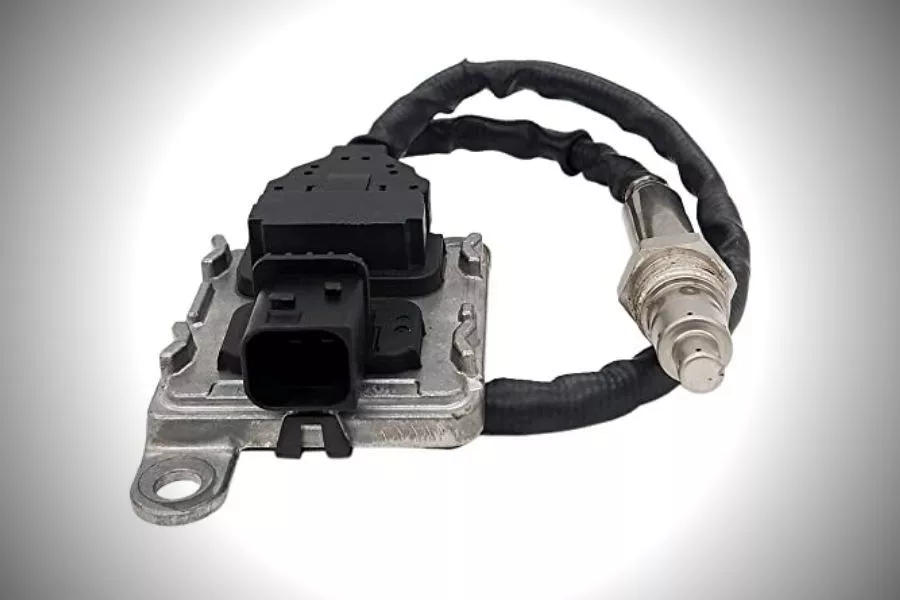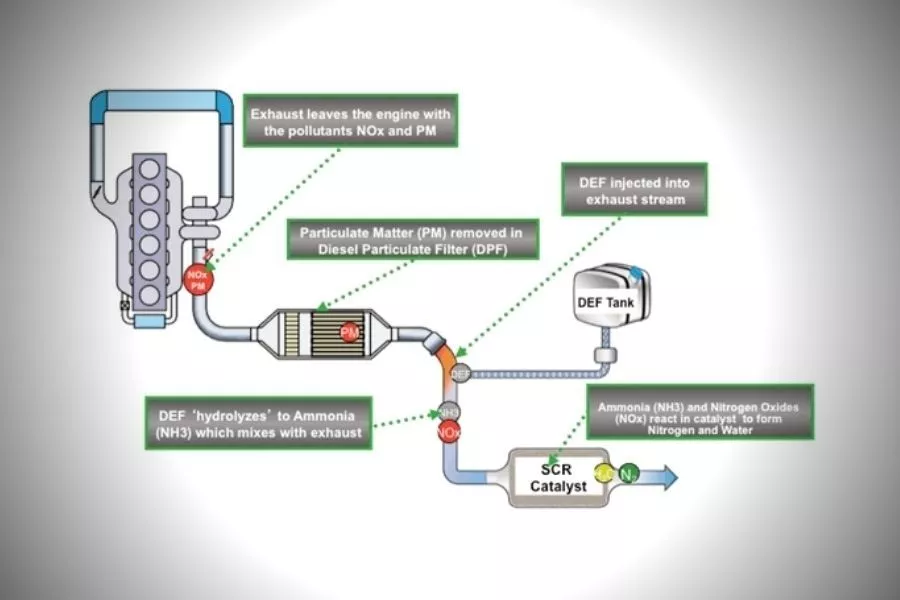In some areas of the world, governments have been cracking down tightly on emissions. Diesel-powered cars are a particular focus since they actually contribute four main pollutants. These include carbon monoxide, hydrocarbons, particulate matter, and nitrogen oxides.
To further reduce nitrogen oxide emissions, many diesel vehicles are fitted with a selective catalytic reductor (SCR). With this device, nitrogen oxides are converted via chemical reaction by using reductants. Possible SCR reductants can either be anhydrous ammonia or urea.

Sometimes, regular maintenance isn't just enough to reduce harmful emissions
For regions that require Euro 6 diesel emissions standards, this is currently the preferred method for manufacturers to meet the said standard. As such, SCRs are mostly used for heavy trucks, commercial vehicles, diesel passenger cars, and many non-automotive purposes.
One crucial component for SCRs to work is the NOx sensor. But what does a NOx sensor do and what happens when this part fails?
What does a NOx sensor do?
A NOx sensor is a part of an SCR system that measures the amount of nitrogen oxide in a vehicle’s exhaust. This way, the SCR knows the proper amount of urea or ammonia in order to provide better fuel economy and less harmful emissions.

A Jesben branded NOx sensor
Apart from real-time measurement of NOx levels, some NOx sensors also watch out for O2 concentration, the mass of exhaust flow, among other parameters.
How does a NOx sensor work?
A high-end NOx sensor works by employing an electrode which in turn contains a small amount of material that reacts with nitrogen oxides. This is called a catalyst and is often made out of titanium oxide, activated carbon, and other base metals. The part then sends a voltage whose strength is directly correlated to the amount of NOx. So, the more NOx there is in the exhaust gasses, the stronger the voltage.
Cheaper, more common NOx sensors work by analyzing the exhaust gas by eliminating oxygen then from there, it judges how much the concentration of NOx is. This is a slower method and sometimes is less accurate than the reactive method mentioned above.
What happens when a NOx sensor fails?
In cars where SCRs are required, a car will tell you via a dashboard warning lamp that your NOx sensor isn’t working. In some instances, a car with a bad NOx sensor will also give you an engine warning light outright.

A basic diagram of an SCR
For Euro 6 compliant cars, the entire operation of their diesel engines is linked to the SCR. In specific makes and models, it will even cause the car to go into “limp mode.”
For those unaware of what the limp mode is, it is a state wherein the car limits the power that it can make in order to save itself. Speed is significantly lowered, RPM limit is lowered, and it might even limit the transmission gears one can use.

NOx is one main cause of smog
To sum it all up, a NOx sensor is a part of the selective catalytic reduction device. The said device is used to reduce the levels of nitrogen oxides being spewed by a diesel-powered vehicle’s exhaust system. By doing this, harmful emissions are reduced, and we can all have fresher, cleaner air to breathe. For more car maintenance tips and automotive know-how, keep it here on Philkotse.com.
NOx sensor: FAQ
1. Do diesel cars in the Philippines use selective catalytic reduction devices?
Answer: Currently, the Philippines is following Euro 4 emissions standards. As such, only a few diesel vehicles are using SCRs.
2. Are nitrogen oxides really bad for the environment?
Answer: Yes, nitrogen oxides are bad for the environment. Large amounts of this gas can cause poor air quality, smog, and even respiratory diseases in humans.
3. Why do diesel engines make more NOx than gasoline engines?
Answer: Diesel engines make more NOx than gasoline engines because they operate at higher temperatures. Diesel fuel, and how diesel engines work, also provide the right conditions for producing more NOx.
4. What does NOx mean?
Answer: NOx refers to nitrogen oxides.
5. What causes a NOx sensor to fail?
Answer: Common causes of NOx sensor failure are soot buildup covering the sensor and damage to its wires.
Recent posts
- Which engine is better, diesel or gasoline? [Opinion] Nov 08, 2022
- 10 Must-know Car Engine Sensors Aug 09, 2022
- 8 easy tips to diagnose your car's exhaust problems Feb 08, 2021
- 6 ways to reduce your driving emissions May 26, 2017












